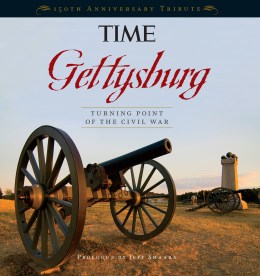
Sometimes the rotting bodies ruptured, compelling burial parties to work elsewhere until the stench had dissipated. So many bodies lay unburied after three days of battle that a surgeon described the atmosphere as almost intolerable. One young boy who lived in town recalled that everyone “went about with a bottle of pennyroyal or peppermint oil” to counteract the smell. Gettysburg residents complained of a stench that persisted until October, when at last the frost came.
Slain Union comrades were accorded more respect and, if possible, an individual grave. Soldiers, perhaps imagining how they would wish to be treated in similar circumstances, improvised ways of providing dignified treatment for the soldiers who had fought alongside them. It was a matter of affirming the humanity of both the living and the dead. Often soldiers sought out friends of the missing, in hopes they could provide aid, help identify bodies and graves, or assist in gathering information for loved ones at home, who otherwise might never know the fate of their absent kin. One soldier from Michigan was relieved to find that a burial party had already interred his friend along with dozens of his fellow soldiers. “All pains possible was taken in their burial,” he wrote. “In some cases their bloody garments were removed and washed and dried on limbs of trees, then replaced.”
Two soldiers from Maine received permission to return to the part of the field where they had last seen a close friend on the third day of battle, and search for any sign of him. “We found him,” one of them wrote, “face down, and with many others the flesh eaten (in that hot climate) by maggots, but not so bad but that we could recognize him. When we went to bury him, all we could find to dig a grave was an old hoe in a small building. The bottom of the grave was covered with empty knapsacks; we laid in our beloved brother and covered him with another knapsack, and over all put as much earth as we could find. The grave was dug at the foot of a large tree. We found a piece of a hard wood box cover and cut his name on it with a jackknife and nailed it to the tree at the head of his grave.”
The Comrades Left Behind
As news of the enormous battle spread to Washington, Philadelphia and beyond, families and volunteers began to descend on the little Pennsylvania town, stretching its capacities to the limit but also offering help in caring for the wounded and dead. Agents of the U.S. Sanitary Commission—a federally authorized, privately-funded relief organization established early in the war to provide aid for sick and wounded Union soldiers—were well aware that their work made them an important and often unique resource for anxious families desperate for information of any kind about their sons, fathers and brothers. They began systematically surveying field hospitals and burial sites, creating ledgers of casualties and directories of patients in order to be able to respond to inquiries from worried and often frantic relatives. The agency was soon inundated with letters and requests.
During the battle, Confederate units had established nearly 40 makeshift field hospitals close to the battleground to care for an eventual 15,000 wounded and 5,000 sick officers and men. But when Lee’s defeated army moved south in retreat, hurrying to cross the Potomac to safety, thousands of suffering Confederate soldiers who could not safely be moved were left behind to die or to be taken as prisoners of war. Others were hastily loaded onto carts and wagons or instructed to walk alongside the ragtag procession of retreating men that represented the remains of the Confederate army.
Soon all the men were drenched by an unrelenting summer rain—a downpour so heavy, one witness said, it was as if “the very windows of heaven seemed to have opened.” For the suffering, it seemed perhaps more like the windows of hell. Many of them died en route, and hastily dug shallow graves dotted the roadside along Lee’s route of retreat. For some of the more privileged among the rebel dead, personal slaves who had accompanied their masters north carried their bodies south for burial at home.
The repatriation of the Confederate slain would continue long after both the battle and the war were over, as would the pain and anguish and dislocation those deaths caused. In the early 1870s, memorial associations of white Southern women would arrange for several thousand more Confederate dead from Gettysburg to be disinterred and transported to cemeteries in Richmond and Charleston, where they were reburied with solemn pageantry and celebrations of the South’s Lost Cause.






